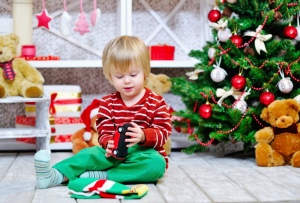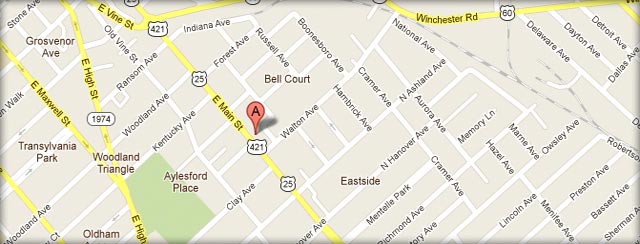- ATV accidents
- Brain Injuries
- Bus Accident
- Car Accidents
- Construction Accident
- Distracted Driving
- Drugged Driving Accident
- DUI
- Firm News
- Mass Tort
- Medical Malpractice
- Motorcycle Accidents
- Pedestrian Accidents
- Personal Injury
- Product Liability
- Safety
- Social Security Disability
- Truck Accidents
- Vehicle Accidents
- Workers Compensation
- Workplace Injuries

It’s December, and that probably means your children have already mailed their letters to Santa or made their holiday wishes well-known around the house. But before you go shopping for the most coveted toys this year, it’s important to put safety first. A first-of-its-kind study from Nationwide Children’s Hospital in Ohio reports that toy-related injuries increased 40 percent between 1990 and 2011.
Researchers found that 3.2 million children were sent to emergency rooms throughout the U.S. after accidents with toys during the 22-year study period. The leading culprit: foot-powered scooters.
According to the study authors, scooters caused 580,000 injuries between 2000 and 2011, partly because of a surge in sales and also a lack of proper safety equipment. Along with scooters, ride-on toys such as wagons and tricycles accounted for 42 percent of injuries to kids between 5 and 17, and 28 percent of injuries to those under 5.
This dismaying news comes just after the consumer-interest group U.S. PIRG released the findings of its annual Trouble in Toyland report, which has surveyed toys for hazards and noncompliance with federal standards for nearly 30 years. Although the U.S. Consumer Product Safety Commission recalled 11 million toys in 2013, the survey found that many dangerous toys still made it to store shelves, and for reasons ranging from toxic levels of lead to choking hazards.
Although there are strict safety standards for toy manufacturing and marketing, the CPSC does not examine every toy that winds up in stores or is sold online. That means that parents bear the responsibility of doing their homework to learn what the dangers are, how to identify them and how to prevent their children from being injured.
According to Trouble in Toyland, many of the surveyed toys presented choking hazards and five toys had concentrations of toxics that exceeded federal standards. Among its findings:
- One set of play sheriff and police badges from a dollar store exceeded the limit for lead, which has long been recognized as a serious threat to proper child development even after low-level exposures.
- A Jake & the Neverland Pirates tambourine marketed to children under age 2 had nearly 10 times the allowable amount of chromium, which has been linked to everything from allergic reactions to cancer. Chromium is commonly found in dyed or pigmented toys and jewelry.
- A rubber duck, Hello Kitty bracelet and hair clip set and Dora the Explorer backpack all exceeded the limits for phthalates, which scientists have found to cause changes to male reproductive development and early puberty.
- A small yo-yo included with the Our Generation doll Sydney Lee presented a choking risk to children.
- A Disney Jr. Doc McStuffins figurine playset broke easily, creating small parts that fit into an official choke test cylinder, which replicates the size of a windpipe for a child under 3.
- Some choke hazards were not accompanied by a warning label, including a beaded headband, party favors and a bath toy.
- Some toys had batteries that were easily accessible to children despite standards requiring they be secured with a tool like a screwdriver and be able to withstand reasonable “use and abuse” by kids.
- Balloons are a top cause of suffocation for children and are required to have a warning label saying that they are a hazard to children under 8, but the survey found balloons marketed to children under 8 on shelves. Others had conflicting labels.
- Some toys were excessively loud, but didn’t quite exceed federal noise limits.
What Parents Can Do
Learning about dangers in popular kids’ toys understandably causes concern for many parents. Thankfully, there are ways to make informed decisions before buying a toy. Recommendations include:
- Review U.S. PIRG’s Toy Safety Tips.
- Examine all toys before buying them. Look for small parts or “near small” parts that could be choking hazards.
- Know the dimensions of an official small part or toy. Small parts less than 1.25 inches across and up to 2.25 inches long and balls that can fit into a toilet paper roll are a choke hazard for kids 3 and under.
- Is the toy too loud for you? It’s too loud for your child, too.
- Make sure batteries cannot be accessed easily.
- Report any dangerous toys or injuries to the Consumer Product Safety Commission.
- If you’re buying a riding toy or scooter, be sure to purchase the safety equipment such as helmets, kneepads and elbow pads.
For toys you already own:
- Inspect them for hazards upon purchase and after getting some wear and tear.
- Throw away any broken parts and store small parts out of the reach of small children.
- Use tape to cover up speakers on toys that are too loud, or remove the batteries altogether.
- Check for recalls here.
The Frank Jenkins Law Office wishes you and all of your family a joyous holiday season and happy New Year.

